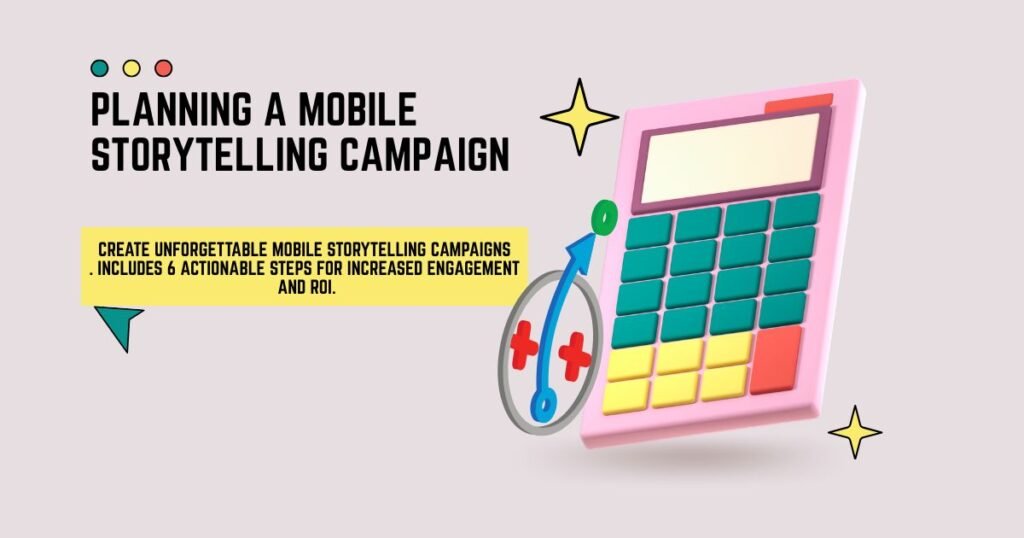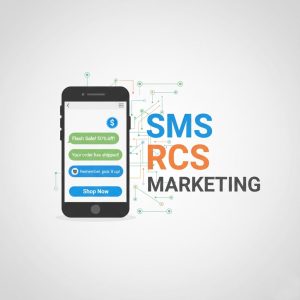How to Plan a Mobile Storytelling Campaign That Captures Attention

Storytelling has always been in the heart of effective communication, but in a mobile-first world the way we tell stories must be developed. Mobile narrative is not just a trend; This is a powerful way to contact the audience on devices that they use most. Whether you are a market, brand manager or contents, you can understand how to distinguish a compelling mobile storytelling campaign can separate you.
This guide breaks the process of creating a successful mobile storytelling campaign at clear, action -rich stages. Towards the end, you will learn how to effectively associate the audience, run meaningful conversations and leave a permanent impression.
Why Mobile Storytelling Matters
It is important to understand it before we jump into “How”. Mobile storytelling is about meeting the audience where they are. According to a recent survey, more than 55% of global web traffic comes from mobile devices, users spend an average of 4 hours per day on the phone. It provides a huge opportunity to draw attention through stories that are suitable for small screens and low attention spans.
A well -done mobile storytelling campaign humanizes your brand, creates emotional connections and increases loyalty. In addition, it can run an impressive return if added with data -driven strategies.
Step 1 Understand Your Audience
Effective storytelling starts with knowing who you’re talking to. Begin by identifying your target audience and understanding their behaviors, preferences, and pain points. This information is your foundation for creating narratives that resonate.
Tips for Audience Research
- Leverage analytics tools like Google Analytics or social media insights to understand your audience demographics.
- Conduct surveys or interviews to uncover deeper emotional triggers.
- Create audience personas that outline your ideal viewer’s age, interests, and motivations.
By understanding your audience, you can determine the tone, format, and platforms best suited for your mobile storytelling campaign.a
Step 2 Define Your Campaign Goals
Unlike traditional campaigns, mobile storytelling often focuses on emotional engagement rather than direct sales. Clearly define what you aim to achieve before building your narrative.
Common Campaign Goals
- Increase brand awareness by telling an inspiring origin story.
- Drive website traffic through engaging calls to action.
- Enhance customer loyalty with relatable, behind-the-scenes content.
- Educate your audience about a product or cause through interactive formats.
Establish measurable goals, such as increasing click-through rates by 20% or achieving 1,000 story views within a week. This will help you create focused content and track success.
Step 3 Develop a Compelling Storyline
Every great story has a structure that draws the viewer in, and mobile storytelling is no exception. Use classic storytelling techniques like the hero’s journey to craft a narrative people can’t resist.
Key Elements of a Mobile-Friendly Storyline
- Hook: Grab attention within the first three seconds with a bold statement, question, or visual.
- Build-up: Present a relatable challenge or scenario to create emotional investment.
- Resolution: Showcase how your brand, product, or idea solves the problem.
- Call to action: Encourage viewers to take the next step (e.g., follow your page, visit your website).
When building your storyline, remember the golden rule of mobile content: Keep it simple and concise. Small screens demand brevity, so cut the fluff and deliver your message quickly.
Step 4 Choose the Right Mobile Formats and Platforms
There’s no one-size-fits-all approach to storytelling formats, especially on mobile devices. Selecting the right format and platform depends on your goals and where your audience spends their time.
Popular Mobile Storytelling Formats
- Short-form Video: Platforms like TikTok, Instagram Reels, and YouTube Shorts thrive on videos under 60 seconds.
- Carousel Posts: Use platforms like Instagram to take viewers on a step-by-step visual storytelling experience.
- Interactive Stories: Engage users with polls, quizzes, and questions on Instagram Stories or Facebook Stories.
- Live Streams: Share unfiltered, real-time moments to foster authenticity.
- Ephemeral Content: Leverage disappearing content on Snapchat or Instagram to create a sense of urgency.
Pro Tip: Test and optimize content for vertical video formats. With 94% of mobile users holding their phones vertically, this orientation ensures a seamless viewing experience.
Step 5 Integrate Visual and Emotional Elements
On mobile screens, visuals carry more weight than text. Strong visuals, supported by emotion-driven narratives, are essential for memorable mobile storytelling.
Visual Tips for Mobile Campaigns
- High-quality images and videos: Blurry visuals are an immediate turnoff.
- Dynamic animations: Motion captures attention faster than static visuals.
- Bold typography: Ensure any text is legible on small screens.
- On-brand colors and visuals: Maintain consistency with your brand identity.
Pair these visuals with emotional cues. Is your story heartwarming, funny, or inspiring? Connecting on an emotional level deepens engagement and brand recall.
Step 6 Leverage Analytics to Optimize Performance
Even the best stories need updated strategies to perform their best. Once your campaign is live, use data to understand what’s working and what isn’t.
Metrics to Track
- Engagement Rates: How many views, likes, shares, and comments does your content receive?
- Retention Rates: Are viewers sticking around until the end of your story?
- Conversion Rates: How many viewers completed your call-to-action?
- Bounce Rates: Are users leaving the content early, and why?
Use these insights to tweak future campaigns. For example, if bounce rates are high, rethink your opening hook.
How Mobile Storytelling Builds a Community
An underrated advantage of mobile storytelling is its ability to foster a sense of community. When you tell stories that resonate, you don’t just sell products; you create loyal advocates who share and amplify your message.
Encourage your audience to participate by:
- Using interactive elements like polls or reactions.
- Running user-generated content challenges where followers contribute their own stories about your brand or product.
- Starting conversations through creative hashtags and brand shout-outs.
By nurturing this two-way engagement, your mobile storytelling campaign becomes more than just a marketing tool – it becomes a powerful driver of community.
Make Your Campaign a Success
Mobile storytelling has redefined the way brands connect with audiences. By focusing on simplicity, visual appeal, emotional resonance, and sharp analytics, your campaign has the potential to engage and inspire like never before.
If you’re ready to take your storytelling game to the next level, start planning your campaign today. Remember, every great story begins with a single step. What’s yours? Let’s find out.
Engage with Simplicity and Visual Appeal
In the age of short attention spans, simplicity is key. Keep your message clear and concise, and let stunning visuals do the heavy lifting. A cluttered campaign will only confuse your audience and dilute your impact.
Consider using user-generated content to add authenticity to your campaign. Authenticity builds trust, which then leads to engagement.
Emotional Resonance is Key
People are emotional creatures, and stories hanging on heartbeat are more likely to be repeated with the audience. Use forward -looking characters, experiences with real life or strong series to provoke emotions in the audience.
But remember to keep it real – the audience is in a hurry with rebellion or manipulation. Make materials that reflect the values of your brand and connect to their target groups at the individual level.





